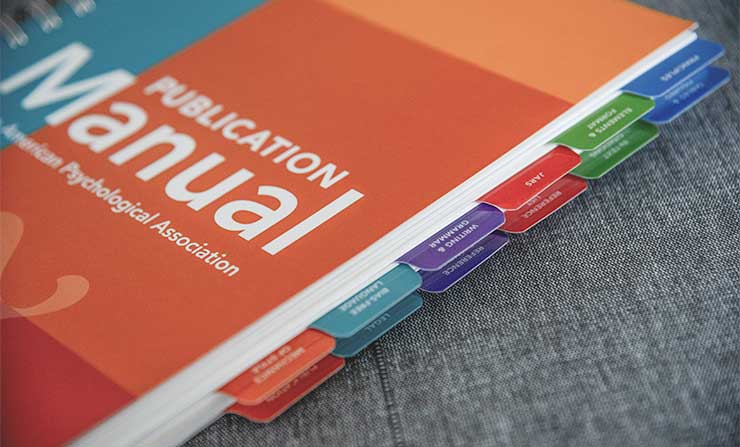

The new edition of the Publication Manual is available in the library.
The APA Style Sixth Edition Resources archive contains the archived resources for the sixth edition, should you still need support with the old guidelines.
This guide is based on the Publication Manual of the American Psychological Association, 7th ed. (Washington, DC, American Psychological Association, 2010). APA is most commonly used to cite sources in psychology and the social sciences in general.
When citing sources, APA style uses the Author-Date method. This is different from other citation styles, such as MLA or Chicago Notes & Bibliography, because the name of the author is followed directly by the publication date, both in the reference list and in the in-text citation.
Other citation styles use the Author-Date method. Consult your instructor in order to verify which is the recommended style.
Every time you use ideas, theories, research, or direct quotes of other authors, you have to cite their works. Therefore, whether paraphrasing a concept, quoting an author directly, summarizing an idea that somehow influenced your work, or referring to data or data sets, you must give credit to the original source. This will help you avoiding plagiarism.
The sources that you use within your work must appear both in the text (In-text citations) and at the end of your research paper (Reference list) in alphabetical order.
Each source cited in the text must appear in the reference list, and each entry in the reference list must be cited in the text.
References to classical works and references to personal communications are cited in the text only, and they do not need to appear in the reference list.
In this guide you will find examples of in-text citations, as well as examples of entries that are used to compile the reference list.
The APA Style Blog is the official companion to the Publication Manual of the American Psychological Association, 7th ed. It's run by a group of experts who work with APA Style every day. They publish weekly posts to talk about different aspects of APA Style.
The APA Style blog is a place for the APA Style team to explore the nuances of style guidelines and to provide insights on updates in the seventh edition.
Stay up to date by following the APA Style team.
For a complete list of style rules, please consult the APA manuals, or take a look at the official tutorial from the APA website.
 This work is licensed under a Creative Commons Attribution-NonCommercial 4.0 International License | Details of our policy
This work is licensed under a Creative Commons Attribution-NonCommercial 4.0 International License | Details of our policy